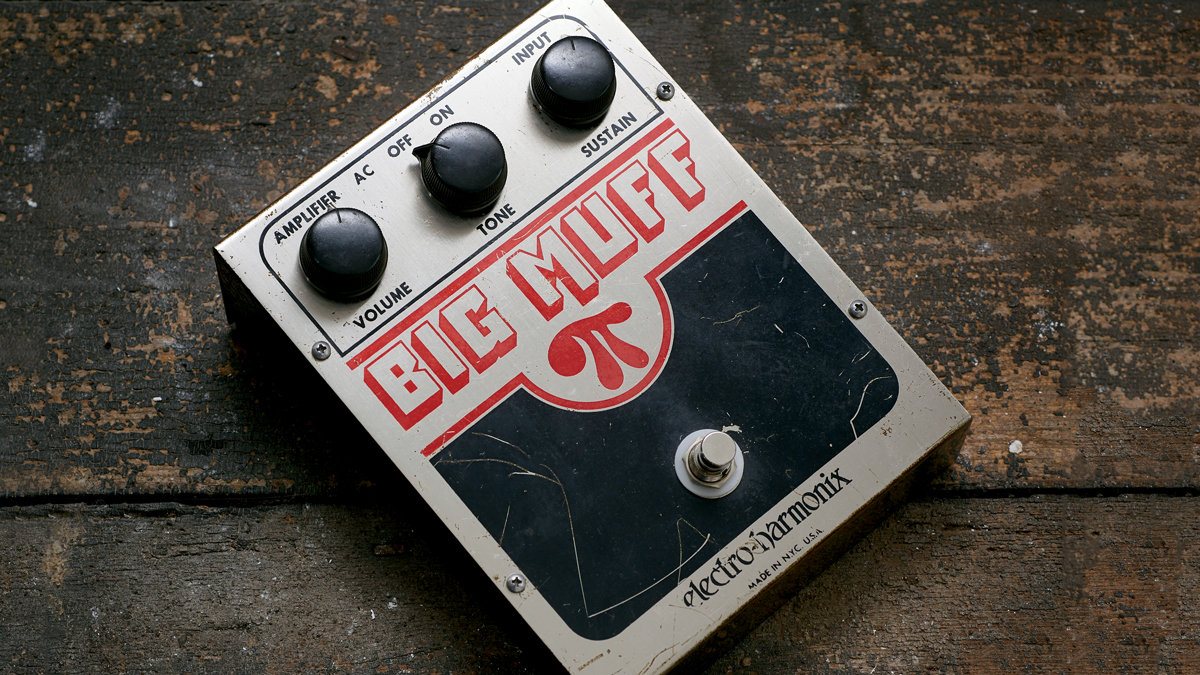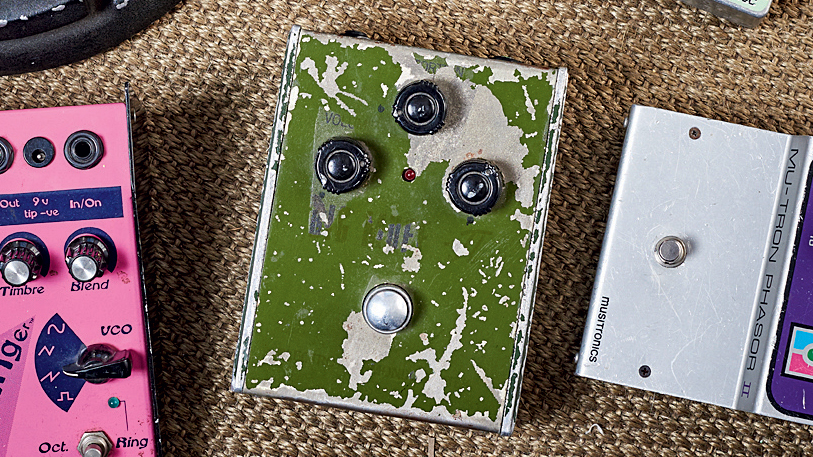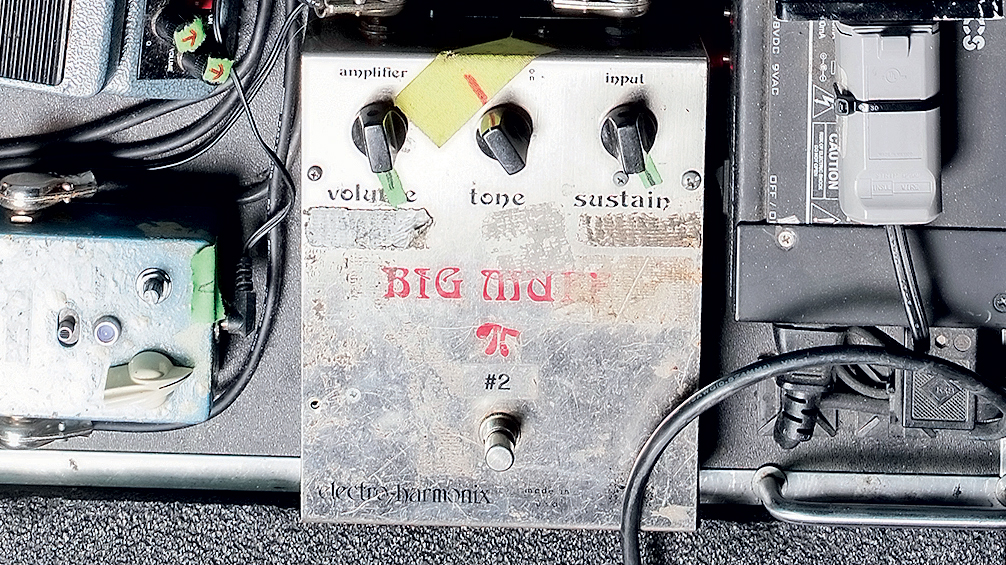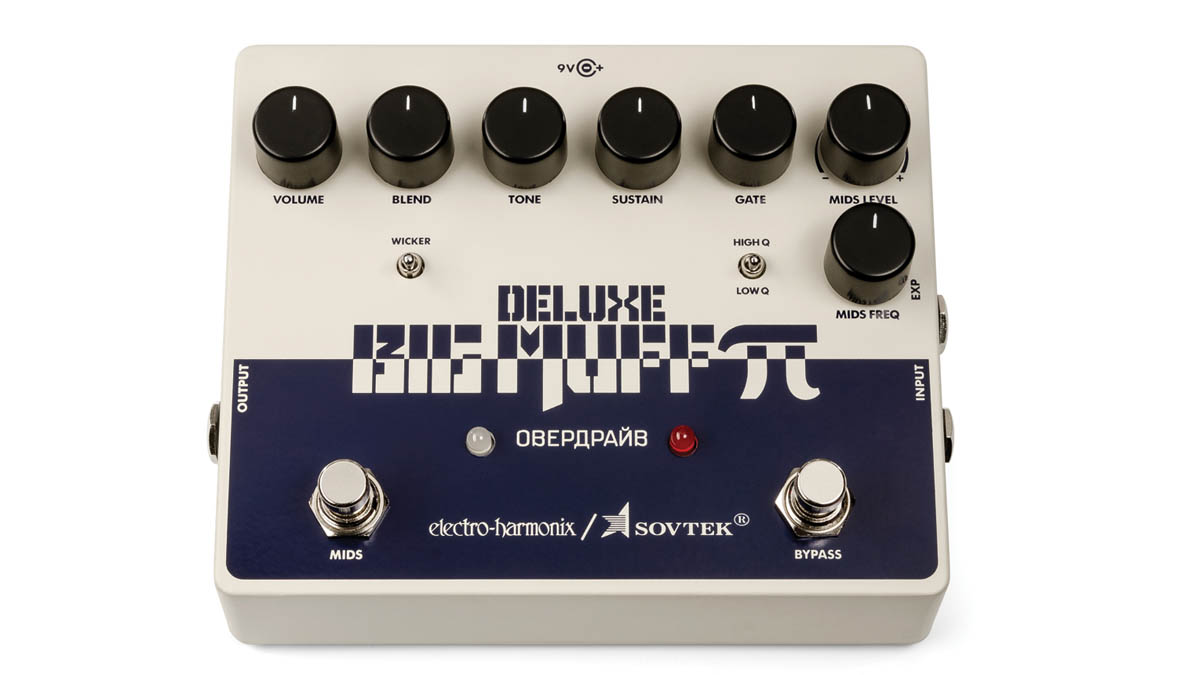Classic gear: the enduring legacy of the Electro-Harmonix Big Muff Pi
From Hendrix to Gilmour, this iconic fuzz pedal has been delivering for decades

Although many people identify the Big Muff Pi as a fuzz pedal, Electro-Harmonix describes its most revered of stompboxes as a “distortion/sustainer”.
The distinctions between fuzz, distortion and overdrive are as fuzzy as the sounds themselves, and in the early days, these kinds of tones were often created by accident.
Such was the case when recording engineer Glenn Snoddy took the first commercially available transistorised fuzz pedal – the Maestro FZ-1 Fuzz-Tone – to market in 1962 with Gibson, after hearing the ‘fuzz tone’ produced by a faulty console preamp while recording an electric bass guitar (as heard on Marty Robbins’ 1961 hit Don’t Worry).
The Rolling Stones’ FZ-1-touting (I Can’t Get No) Satisfaction kickstarted a demand for fuzzboxes
Gibson was so impressed with this discovery that it released a variation of the EB-0 electric bass with a built-in ‘Fuzztone’ circuit, the EB-OF, in 1962. Neither product took off and the EB-OF was discontinued in 1965 – the same year The Rolling Stones’ FZ-1-touting (I Can’t Get No) Satisfaction kickstarted a demand for fuzzboxes.
After that, a number of transistor-based fuzz pedals emerged, most notably Fuzzrites and Astrotones in the US, along with Tone Benders and Fuzz Faces in the UK. In 1967, when The Jimi Hendrix Experience released their fuzz-fuelled debut, Are You Experienced, Mosrite rebranded its Fuzzrite pedal for Guild as the Foxey Lady (named after the US spelling of the track Foxy Lady).
By 1968, Electro-Harmonix founder Mike Matthews had taken over Foxey Lady production for Guild using variations of the original two-knob circuit design. A later version was also sold as the Electro-Harmonix-branded Axis fuzz (named after The Experience’s album Axis: Bold As Love), and a three-knob Guild Foxey Lady – essentially a rebranded Big Muff Pi – appeared in 1970.



• Late 1968
EHX founded; two-knob Foxey Lady and LPB-1 plug-in unit released.
• Early 1969
Two-transistor Muff Fuzz released 1969 Four-transistor Big Muff Pi released; three-knob ‘triangle’ layout; black graphics; metallic casing.
• 1973
‘Ram’s head’ motif; knobs in a line; colour graphics; metallic casing
• 1976
Black & red graphics dominate metallic casing; power supply jack.
• 1978
Op-amp circuit; some with tone bypass.
• 1979
Alternative combinations of black/red/white/blue graphics.
• 1984
Electro-Harmonix temporarily ceases production in US.
• 1992
Russian-made Sovtek Big Muff Pi 2000 Production recommences in New York
While riding the wave of his success with the Guild Foxey Lady fuzz, Mike Matthews formed Electro-Harmonix in 1968 and, according to Mike, the first effects unit built under his new brand was the LPB-1 Linear Power Booster plug-in device in late 1968.
Get The Pick Newsletter
All the latest guitar news, interviews, lessons, reviews, deals and more, direct to your inbox!
The next year, Mike expanded the range to include the two-transistor Muff Fuzz, and later that year Electro-Harmonix unveiled the four-transistor (silicon) Big Muff Pi pedal.
With its smooth, heavily saturated distortion sounds, long sustain and dynamic tone control, it soon became popular among guitarists of the day, including Woodstock legends Carlos Santana and Jimi Hendrix.
The original Big Muff Pi is known as the ‘triangle’ version on account of its triangular three-knob layout and appeared in a metallic casing with simple black lettering.
In 1973, the casing changed to a larger format with red, blue, purple or black graphics including a ‘ram’s head’ motif in the bottom-right corner. In 1976, a new design appeared featuring the dominant red-and-black graphics seen in the current production of standard Big Muff Pi pedals.
Along with the late-70s op-amp circuit and 90s green Russian-made versions, all three of the above styles have been reissued by Electro-Harmonix in addition to several other permutations including the Bass, Tone Wicker, Deluxe, Germanium 4, Little and Nano Big Muff Pi pedals.
Mike Matthews on the Big Muff Pi
The Electro-Harmonix founder looks back at more than half a century of the iconic pedal

“Jimi Hendrix used a Big Muff in 1969. Manny’s [of New York] was the first store I sold Big Muffs to and he bought one of the first ones from there.
“[Jimi] invited me to hang out at a recording session and there on the floor he had the Big Muff he bought at Manny’s! [Carlos] Santana bought a Big Muff from me using mail order with a Santana cheque and letterhead back in 1971!
“This is my second go with Electro-Harmonix. I started it in ’68 and I was growing super-fast but went bankrupt in the early 80s. In the early 90s, I saw that a new market had developed – the vintage market – where all the pedals that I built in the 70s were selling for much more than what I used to sell them for.
“At that time, I was doing stuff in Russia and so I gave a small military factory in St Petersburg the design of the Big Muff and they re-engineered the chassis, switch and circuit board. I started manufacturing Big Muffs in Russia, but then switched back to the USA [in 2000].”
Rod Brakes is a music journalist with an expertise in guitars. Having spent many years at the coalface as a guitar dealer and tech, Rod's more recent work as a writer covering artists, industry pros and gear includes contributions for leading publications and websites such as Guitarist, Total Guitar, Guitar World, Guitar Player and MusicRadar in addition to specialist music books, blogs and social media. He is also a lifelong musician.
“The original Jordan Boss Tone was probably used by four out of five garage bands in the late ’60s”: Unpacking the gnarly magic of the Jordan Boss Tone – an actual guitar plug-in that delivers Dan Auerbach-approved fuzz
“This is a powerhouse of a stompbox that manages to keep things simple while offering endless inspiration”: Strymon EC-1 Single Head dTape Echo pedal review











